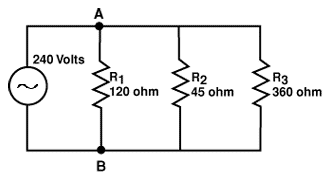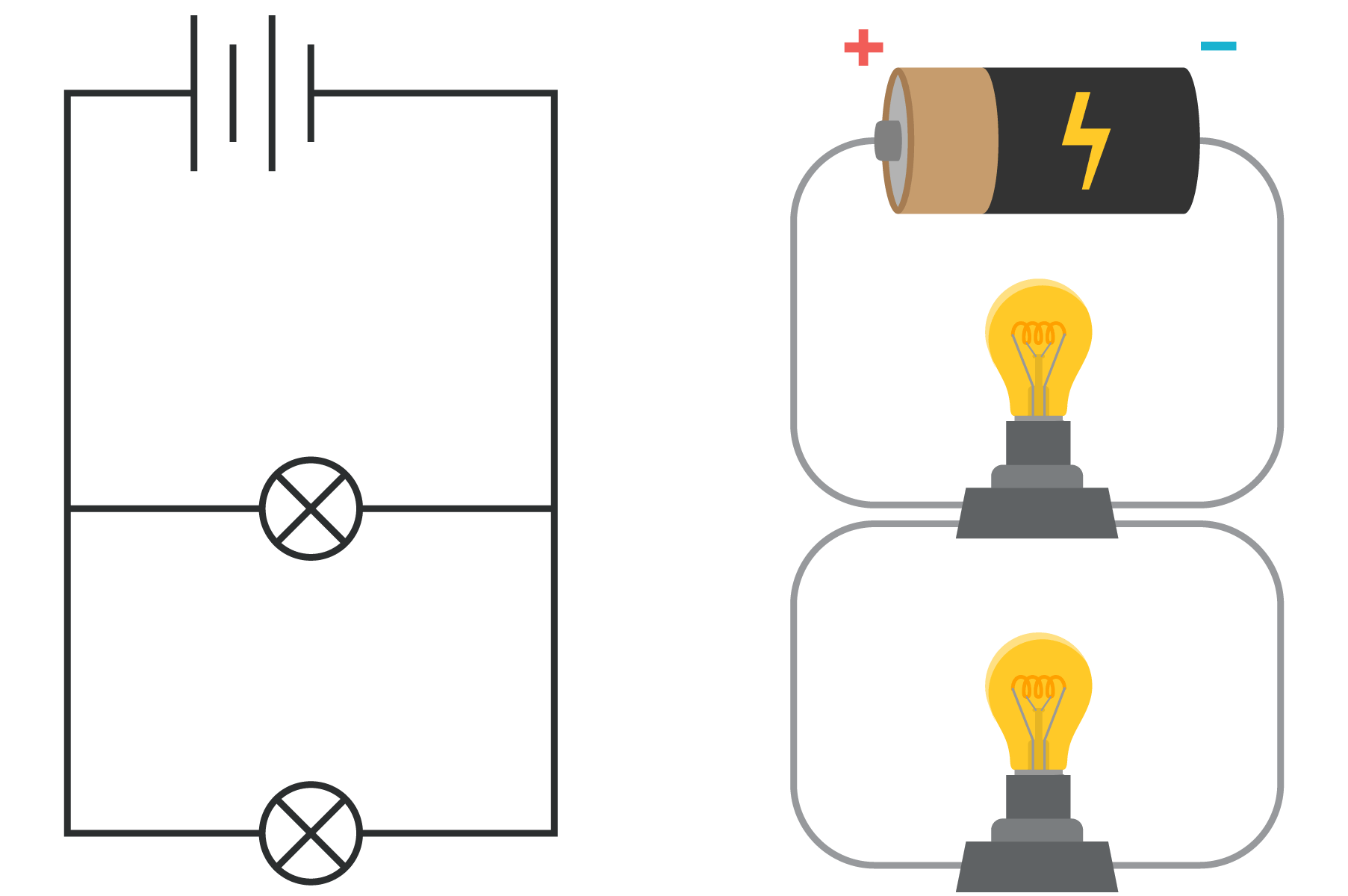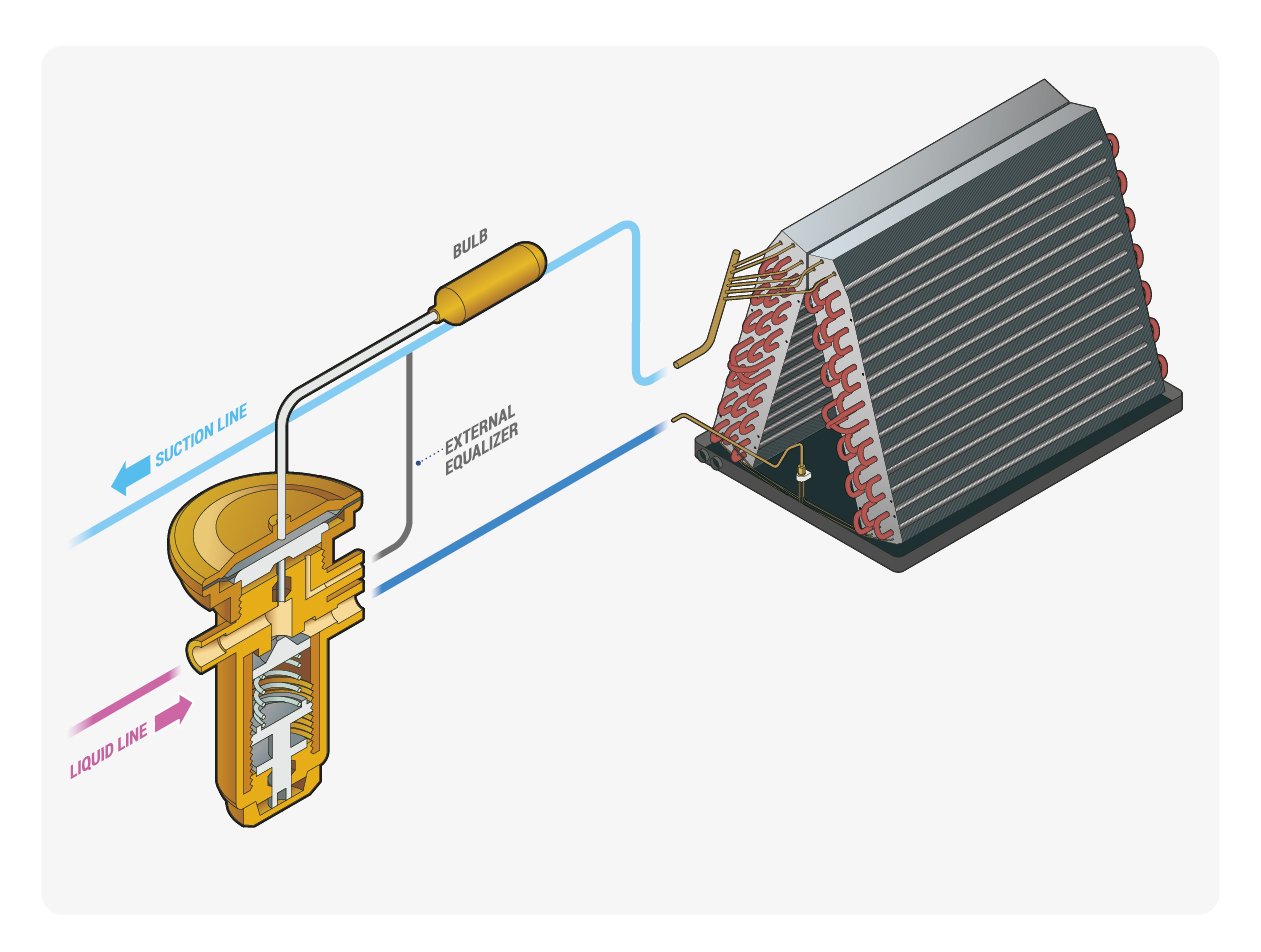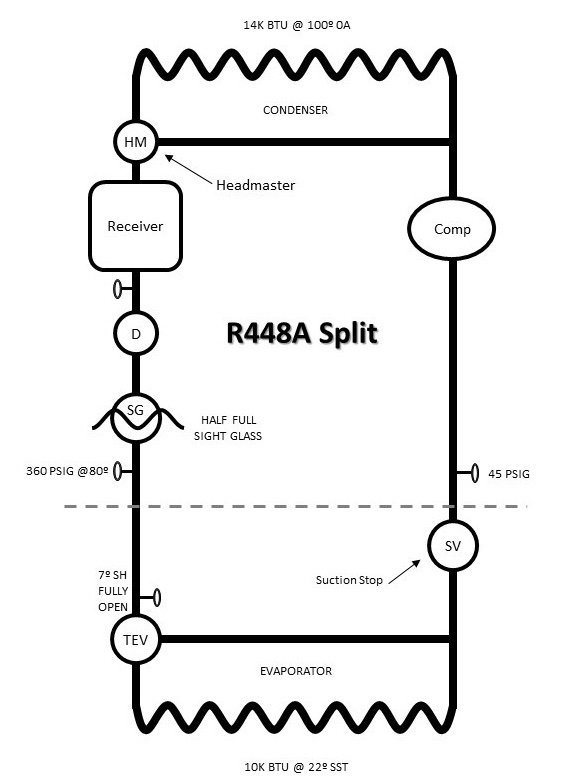Get Tech Tips
Subscribe to free tech tips.
Parallel Circuit Resistance
 In a series circuit (loads connected in a row end to end), it's easy to calculate total circuit resistance because you simply add up all the resistances to get the total.
In a series circuit (loads connected in a row end to end), it's easy to calculate total circuit resistance because you simply add up all the resistances to get the total.
In a parallel circuit, the voltage is the same across all the loads; the amperage is simply added up, but the resistance is a bit more tricky.
It gets tricky to imagine because the total circuit resistance of parallel loads goes down the more loads you add.
For example, if you have one light bulb connected to a power source, the total resistance of the circuit is just the resistance of the bulb.
Add in another bulb in PARALLEL, and the resistance of the circuit goes DOWN.
How to do the math

When you calculate the total resistance of a parallel circuit, you take each individual resistance and divide it into (not by) one. You then add up all the resistances that were divided into one and divide that sum into one. The formula looks like this for the diagram at the top of the article:
1÷Rt (total resistance) = 1÷R1 + 1÷R2 + 1÷R3
For this particular application, as shown above, it would be:
1÷Rt (total resistance) = 1÷120 + 1÷45 + 1÷360
So, 1 ÷ 120 = 0.0083 + 1 ÷ 45 = 0.022 + 1 ÷ 360 = 0.0028
Then we add them all up:
0.0083 + 0.022 + 0.0028 = 0.0331
Then, to find the total, you divide one by the total:
1 ÷ 0.0331 = 30.21 ohms total
As you will notice, 30.21 ohms is less than the lowest resistance in the circuit. This makes sense when you think about Ohm's law.
Tying into Ohm's law

Ohm's law states that voltage (V) is equal to the product of amperage (I) and resistance (R). That means the lower the resistance, the higher the amps. Adding in additional parallel loads INCREASES the amperage in a circuit. We see this every day when we notice that compressor amps and condenser fan amps added together equals total condenser amps.
So, it stands to reason that if lower resistance equals higher amps and adding in more parallel loads increases the amps, then adding in more parallel loads reduces the resistance. (Unsurprisingly, the opposite is true for series circuits. But in practice, series circuits can be a little confusing for novice techs. HERE is an article about series circuits and how the amperage, resistance, and wattage all behave.)
This idea also busts the myth that electricity ONLY takes the path of least resistance. Electricity actually takes all paths between positive and negative charges, and every additional path (parallel circuit) just decreases the resistance between the two points of potential difference. This phenomenon increases the total circuit amperage, which is why the breaker trips when you try to run two hairdryers on one 15a circuit. Two hairdryers in parallel = lower total circuit resistance = higher amps.
Not that I would use two hairdryers… maybe that's why I'm almost bald.
—Bryan
P.S. – I made a video about this topic a little while ago. You can watch that video HERE. I also have a brief tech tip about wiring capacitors in parallel and in series, which may help technicians in a pinch. You can read that article HERE and an extra tech tip about connecting transformers in parallel HERE.








Comments
Show a York rooftop wiring diagram. Then explain series and parallel circuit. Give the working man a break.
Show a York rooftop wiring diagram. Then explain series and parallel circuit. Give the working man a break.
http://pharmafst.com/# trouver un mГ©dicament en pharmacie
http://pharmafst.com/# trouver un mГ©dicament en pharmacie
Tadalafil 20 mg prix en pharmacie: cialis generique – cialis sans ordonnance tadalmed.shop
Tadalafil 20 mg prix en pharmacie: cialis generique – cialis sans ordonnance tadalmed.shop
Kamagra Oral Jelly pas cher Acheter Kamagra site fiable or Kamagra Oral Jelly pas cher
https://cse.google.ge/url?sa=t&url=https://kamagraprix.shop kamagra pas cher
[url=http://www.kukuts.info/engine/redirect.php?url=http://kamagraprix.shop]Kamagra Commander maintenant[/url] Achetez vos kamagra medicaments and [url=http://www.seafishzone.com/home.php?mod=space&uid=1927925]kamagra livraison 24h[/url] kamagra pas cher
Kamagra Oral Jelly pas cher Acheter Kamagra site fiable or Kamagra Oral Jelly pas cher
https://cse.google.ge/url?sa=t&url=https://kamagraprix.shop kamagra pas cher
[url=http://www.kukuts.info/engine/redirect.php?url=http://kamagraprix.shop]Kamagra Commander maintenant[/url] Achetez vos kamagra medicaments and [url=http://www.seafishzone.com/home.php?mod=space&uid=1927925]kamagra livraison 24h[/url] kamagra pas cher
https://tadalmed.shop/# cialis prix
https://tadalmed.shop/# cialis prix
pharmacie en ligne france pas cher [url=https://pharmafst.shop/#]Meilleure pharmacie en ligne[/url] pharmacie en ligne fiable pharmafst.shop
pharmacie en ligne france pas cher [url=https://pharmafst.shop/#]Meilleure pharmacie en ligne[/url] pharmacie en ligne fiable pharmafst.shop
kamagra gel: kamagra en ligne – kamagra 100mg prix
kamagra gel: kamagra en ligne – kamagra 100mg prix
acheter kamagra site fiable: acheter kamagra site fiable – Acheter Kamagra site fiable
acheter kamagra site fiable: acheter kamagra site fiable – Acheter Kamagra site fiable
https://pharmafst.com/# п»їpharmacie en ligne france
https://pharmafst.com/# п»їpharmacie en ligne france
olympe casino cresus: olympe casino en ligne – olympe casino
olympe casino cresus: olympe casino en ligne – olympe casino
To leave a comment, you need to log in.
Log In